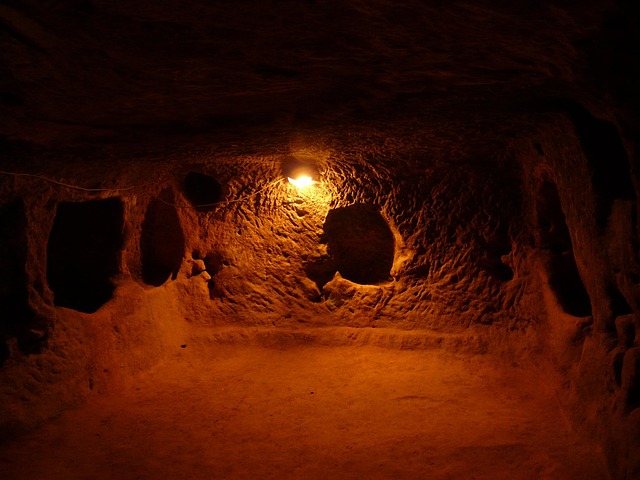Non-invasive subsurface detection using Ground Penetrating Radar (GPR) offers a safe, efficient way to gather data about what lies beneath Earth's surface without disturbing it. GPR captures reflections from objects or layers with differing properties, generating detailed images for various applications, including identifying underground utilities, assessing soil conditions, locating buried structures, and studying archaeological sites. Its versatility, ability to penetrate diverse materials, and resilience in tough conditions make GPR an indispensable tool across industries like construction and archaeology, revolutionizing operations and avoiding costly damage. With continuous technological advancements, GPR's future promises even more efficient and accurate non-invasive subsurface imaging for critical infrastructure projects, environmental remediation, and archaeological research.
Uncovering what lies beneath our feet has never been more accessible with the advent of state-of-the-art Ground Penetrating Radar (GPR) technology. This innovative, non-invasive subsurface detection method revolutionizes how we explore and map hidden structures and obstacles. From construction projects to environmental assessments, GPR offers unprecedented insights into the underground world. This article delves into the mechanics of GPR, its remarkable case studies, and future potential, showcasing its pivotal role in navigating the unknown beneath our surface.
Understanding Non-Invasive Subsurface Detection: An Overview
Non-invasive subsurface detection is a revolutionary approach that uses advanced technologies like Ground Penetrating Radar (GPR) to peer into the earth’s layers without disturbing the surface. This method offers a safe and efficient way to gather critical data about what lies beneath, making it invaluable for various industries. GPR technology sends electromagnetic waves into the ground, which then bounce back as echoes, providing valuable insights into the subsurface structure.
This technique is particularly useful in situations where traditional excavation methods are impractical or environmentally sensitive. By utilizing non-invasive subsurface detection, professionals can identify and map underground utilities, assess soil conditions, locate buried structures, and even study archaeological sites without causing any physical damage. The ability to detect and visualize these hidden elements has transformed how we approach infrastructure development, environmental assessments, and historical research.
The Role of Ground Penetrating Radar (GPR) Technology
Ground Penetrating Radar (GPR) technology offers a powerful and non-invasive method for detecting objects and structures beneath the Earth’s surface. This advanced technology has revolutionized various industries, from construction to archaeology, by providing an accurate and efficient way of mapping the subsurface. GPR sends electromagnetic pulses into the ground, which reflect off objects or layers with different properties, such as soil, rock, or buried artifacts. By analyzing these reflections, experts can create detailed images of the subsurface, identifying hidden obstacles like underground utilities, voids, or ancient structures without the need for invasive excavation methods.
The versatility of GPR lies in its ability to penetrate various materials and withstand challenging environmental conditions, making it an indispensable tool for navigating unknown subterranean landscapes. Its non-invasive nature ensures minimal disruption during the detection process, allowing professionals to gather critical data while preserving the integrity of the site.
Unveiling Hidden Obstacles: Case Studies and Applications
Unveiling Hidden Obstacles: Case Studies and Applications
GPR technology has proven its worth in various industries by offering a non-invasive subsurface detection method, allowing for the identification of hidden obstacles with remarkable precision. One notable application is in construction, where GPR scans can locate underground utilities, buried structures, and voids, ensuring safe excavation and avoiding costly mistakes. For instance, a recent case study highlighted the successful use of GPR to map underground pipes and cables before a major city infrastructure project, leading to seamless construction without any damage to critical utilities.
Moreover, GPR has found applications in archaeology, enabling researchers to uncover ancient structures and artifacts without disturbing the soil. By penetrating the ground, GPR images provide valuable insights into historical sites, helping archaeologists make significant discoveries. These real-world examples demonstrate the versatility of GPR technology in addressing diverse challenges, making it an indispensable tool for projects requiring non-invasive subsurface detection.
Future Prospects and Innovations in GPR for Subsurface Imaging
The future of Ground Penetrating Radar (GPR) holds immense potential for revolutionizing non-invasive subsurface detection. With continuous technological advancements, GPR is evolving to provide more detailed and accurate images, enabling professionals to uncover hidden structures and anomalies with greater efficiency. Researchers are exploring new ways to enhance the resolution and depth penetration of GPR systems, making it an even more versatile tool for various industries.
Innovations such as advanced signal processing algorithms, improved antenna designs, and hybrid imaging techniques are paving the way for more precise subsurface mapping. These developments promise enhanced detection capabilities, allowing for the identification of subtle features that were previously challenging to discern. As GPR technology advances, it will undoubtedly play a pivotal role in fields like archaeology, construction, and environmental remediation, offering non-invasive solutions for exploring and understanding the unseen world beneath our feet.
Ground Penetrating Radar (GPR) technology has emerged as a powerful tool for non-invasively detecting hidden obstacles beneath the surface, revolutionizing industries such as construction and archaeology. By leveraging advanced GPR systems, professionals can now uncover previously inaccessible information, enabling safer and more informed decision-making processes. As research continues to refine and expand the capabilities of this technology, the future of non-invasive subsurface detection looks promising, offering unprecedented insights into our world’s hidden layers.
